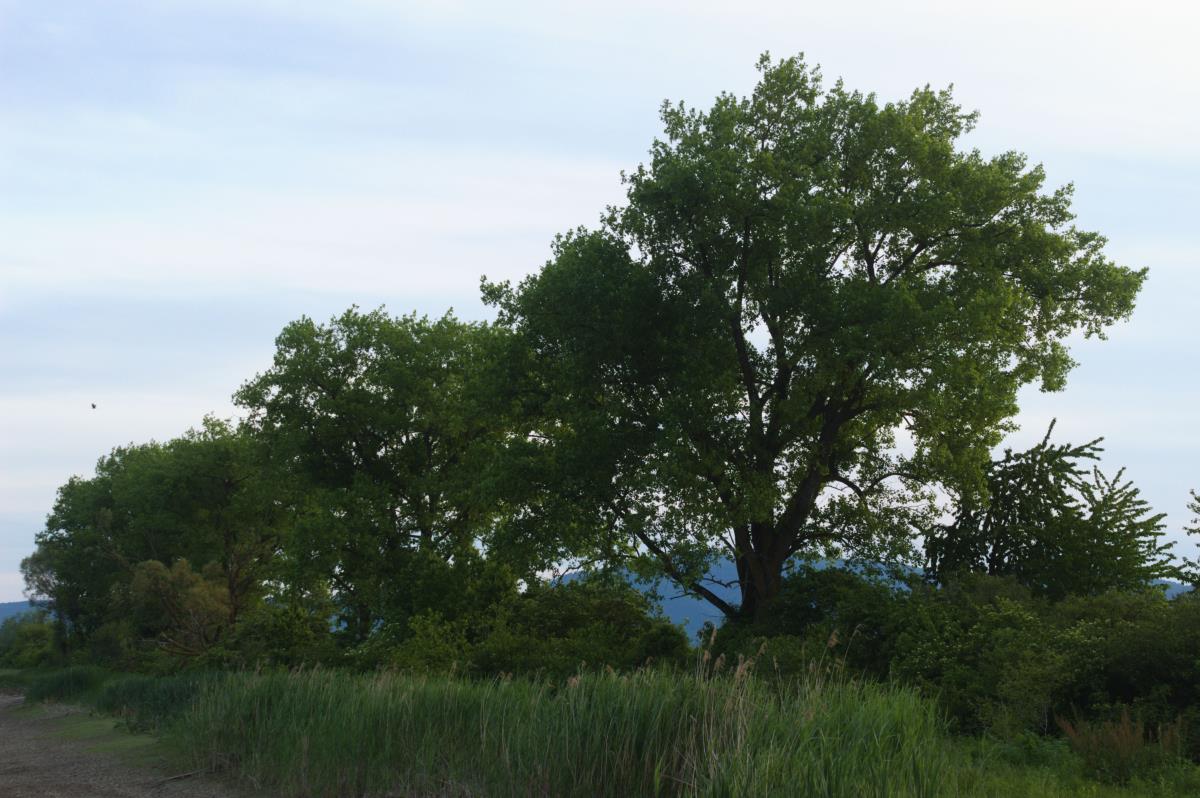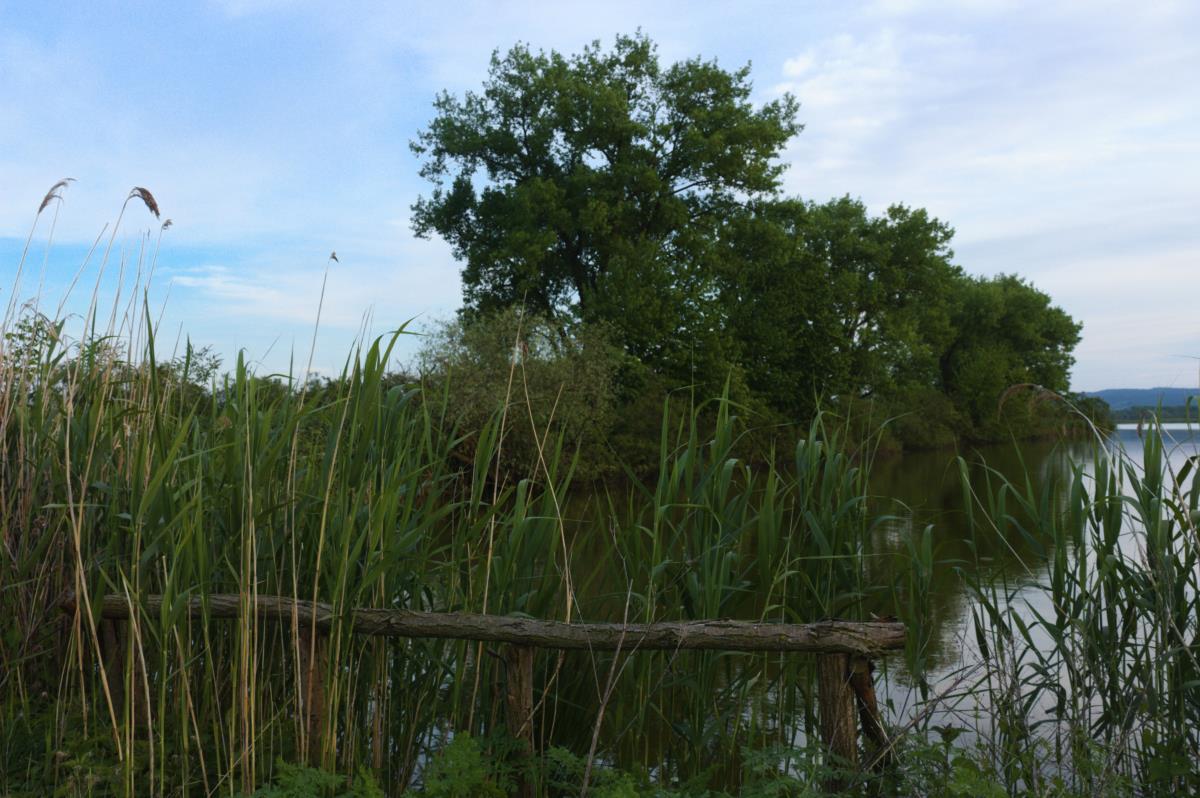JELAS RIBNJACI (PONDS) SPECIAL ORNITHOLOGICAL RESERVE
Category of protection: special ornithological reserve
Year of protection: 1995
Location
Special ornithological reserve Jelas ribnjaci is located in the vicinity of Oriovac village, about 25 km west of Slavonski Brod.
History
Jelas field used to be a large wetland area with contributions from the Sava River and its tributaries. With the construction of embankments and canals, most of the area was drained. Fortunately, during the last century, in the 60's and 70's, an area of about 25 km2 (2500 ha) was turned into fishponds with extensive fish farming owned by the state, i.e. the agricultural cooperative Jasinje. After the collapse of Jasinje, fish farming was maintained at approximately half of the total pond area. In 2019 the remaining fishpond basins were also restored. A small part of the pond area (about 125 ha) was protected in 1995 primarily due to the mixed colony of herons and spoonbills that nest on it.
Tourism
There are no organized visits. The area is supervised by a concessionaire, its biodiversity monitored by NGOs, primarily the Croatian Society for the Protection of Birds and Nature, in cooperation with the Public Institution Natura Slavonica.
Natural values
Jelas polje is part of the European ecological network Natura 2000. The wider area of the pond is protected as a conservation area important for species and habitat types Jelas polje s ribnjacima (HR2001326) and a conservation area important for birds Jelas polje (HR1000005). The target habitat of the area Jelas polje s ribnjacima is 3130 Oligotrophic to mesotrophic standing waters with vegetation of the Littorelletea uniflorae and/or of the Isoeto-Nanojuncetea. It is a habitat that occurs on the border between land and water, i.e. places where flooding and drying of the terrain occur alternately, and typical plants are creeping slitwort (Lindernia procumbens), yellowseed false pimpernel (Lindernia dubia), dwarf hairgrass (Eleocharis acicularis), six-stamen waterwort (Elatine hexandra), brown galingale (Cyperus fuscus), Michel's flat sedge (Cyperus michelianus), water mudwort (Limosella aquatica), ovoid spikesedge (Eleocharis ovata), lesser centaury (Centaurium pulchellum), dwarf club-rush (Schoenoplectus supinus), bristle club-rush (Scirpus setaceus) and water-purslane (Lythrum portula).
Target species are the European fire-bellied toad (Bombina bombina), the large white-faced darter (Leucorrhinia pectoralis), the western barbastelle (Barbastella barbastellus), the Eurasian otter (Lutra lutra) and the European pond turtle (Emys orbicularis).
The greatest value of the area are birds, both migratory and nesting. Of particular interest is the mixed nesting colony of herons and Eurasian spoonbills (Platalea leucorodia). This is certainly one of the most important nesting grounds for spoonbills in Croatia. The colony includes the following species: the black-crowned night heron (Nycticorax nycticorax), squacco heron (Ardeola ralloides), little egret (Egretta garzetta), great egret (Ardea alba), purple heron (Ardea purpurea) and little bittern (Ixobrychus minutus). The Croatian Society for the Protection of Birds and Nature and the Public Institution Natura Slavonica have been organizing bird ringing in this area for years.
Target species are the European fire-bellied toad (Bombina bombina), the large white-faced darter (Leucorrhinia pectoralis), the western barbastelle (Barbastella barbastellus), the Eurasian otter (Lutra lutra) and the European pond turtle (Emys orbicularis).
The greatest value of the area are birds, both migratory and nesting. Of particular interest is the mixed nesting colony of herons and Eurasian spoonbills (Platalea leucorodia). This is certainly one of the most important nesting grounds for spoonbills in Croatia. The colony includes the following species: the black-crowned night heron (Nycticorax nycticorax), squacco heron (Ardeola ralloides), little egret (Egretta garzetta), great egret (Ardea alba), purple heron (Ardea purpurea) and little bittern (Ixobrychus minutus). The Croatian Society for the Protection of Birds and Nature and the Public Institution Natura Slavonica have been organizing bird ringing in this area for years.
Sights
Jelas fishponds were among the largest in the former state of Yugoslavia. The large fishponds are an impressive sight, especially with the large number of wetland birds flying above them or resting and feeding on them. Although there are no organised visits, it is possible to buy fresh fish in the fish farm administration building located in the centre of the old ponds. Along the way, you will see a lot of interesting things. if you buy fish, you will help to preserve fish production and thus help the birds that feed on these ponds.
Known about the unknown
There was a brief attempt to grow rice at the site of today's ponds after World War II., and the local population was involved in the production. Judging by the witty traditional Slavonian folk songs - bećarci, not everyone was impressed by this novelty. The areas were soon turned into ponds, and the peasants returned to growing corn and wheat.
The area is open for visitors:
- Working hours (for visitors):
- Prior notice: The area is open for group visits which should be announced at phone numbers 00385 35 409 043 or 00385 35 409 042 or email zastita.prirode@bpz.hr or using the link:
- http://www.natura-slavonica.hr/hr/zasticena-podrucja1/ announcement-group-posjeta.html
- Additional important information:
The area is managed by Public institution for management of protected parts of nature of Brod-Posavina County
- Address: Petra Krešimira IV. br. 1, 35000 Slavonski Brod, Hrvatska
- Telephone number: +385 35 409 043 ili +385 35 409 042
- Official website: www.natura-slavonica.hr









